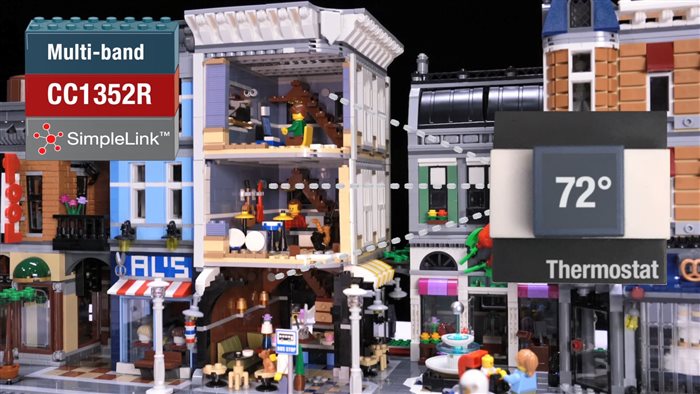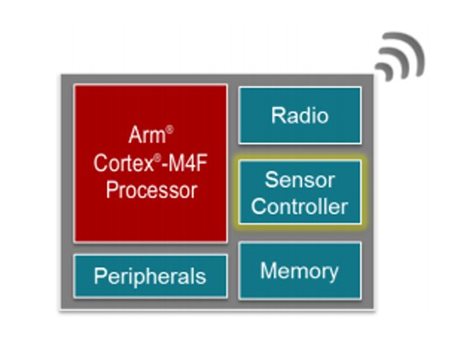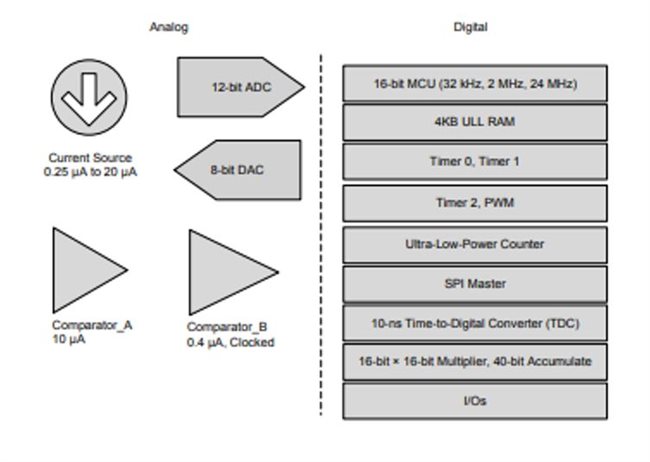SSZT758 january 2018 CC1312R , CC1352R , CC2642R , CC2650MODA , CC2652R

Why does your microcontroller (MCU) deserve a nap? Much like humans, MCUs generally consume less energy while sleeping. Designing low-power connected applications is key to extending battery and product life and proliferating the widespread adoption of networked sensors in homes, buildings and cities. The more that your MCU is sleeping, the longer the battery life of your application.
In a wireless system built around single-chip solutions like SimpleLink™ multiband CC1352R or multistandard CC2652R wireless MCUs, the main MCU of the device is tasked with the majority of the computationally intensive work, like running a protocol stack and the majority of the application code. Although the Arm® Cortex-M4F, the main application MCU of the SimpleLink CC26x2R and CC13x2R devices, has excellent power performance while awake (59µA/MHz), the system consumes significantly less power while sleeping (0.8µA). That’s why it is important to let your MCU “nap” between the wakeup periods in which it completes the periodic tasks for which it is optimized. This enables low-power wireless designs to have expanded battery lifetimes in connected applications. But how can you design a useful application if your main MCU is always sleeping?
The SimpleLink sensor controller is a dedicated, 16-bit central processing unit (CPU) core designed to be very low power with respect to active mode, standby mode and startup energy. This core executes code from dedicated ultra-low-leakage (ULL) random access memory (RAM) and includes several low-power analog and digital peripherals (see Figure 1). It can run completely independently while the main Arm Cortex-M4F application processor naps as long as possible before waking up to complete a task. Many low-power wireless sensor applications can benefit from this low-power system architecture.
 Figure 1 Multistandard Block Diagram
for CC13X2R and CC26X2R
Figure 1 Multistandard Block Diagram
for CC13X2R and CC26X2RTake for example a thermostat system in a large commercial building. A central thermostat receives temperature input from remote, battery-powered temperature nodes installed throughout the building to intelligently control the climate in different zones. The CC1352R or CC2652R devices uses the sensor controller’s serial peripheral interface (SPI) to monitor the remote digital temperature sensors, reading temperature data 20 times per second with an average current consumption of 1.4µA (see Figure 2). If the temperature falls outside of a specific range, the main core and radio of the multiband CC1352R will wake up and report the temperature data back to the central thermostat over a Sub-1 GHz network. Using the multiband functionality of the device, the system can also send Bluetooth® low energy alerts to user’s smartphones. With this ultra-low power operation, battery-powered sensor nodes can run for years off of a coin-cell battery, enabling their placement in remote locations throughout a large building.
 Figure 2 Sensor Controller
Peripherals
Figure 2 Sensor Controller
PeripheralsThe sensor controller is a key differentiator of SimpleLink multistandard CC26x2R and CC13x2R wireless MCUs, allowing for sleepy wireless application designs. Low-power designs are difficult to achieve, yet they are critical for the widespread adoption of networked sensor applications. With the SimpleLink sensor controller engine, your main MCU can nap and your sleepy wireless application can run for years on a coin-cell battery.
Additional Resources
- Read this TI TechNote, “Ultra-Low Power Designs With the CC13x2 and CC26x2 Sensor Controller,” for more information.
- Buy a LaunchPad™ development kit:
- Read the application note, “Getting Started With the CC13xx and CC26xx Sensor Controller.”